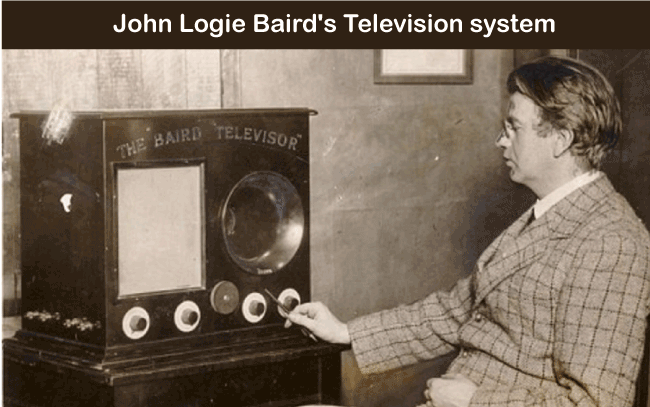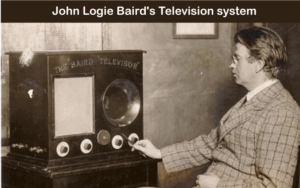
When Was TV Invented For Homes?
Television is one of the most popular forms of entertainment worldwide. It is a medium that provides a window into a wide variety of cultures and lifestyles. It is also a medium that can be shared among families and friends.
Unlike some inventions that have been met with ridicule or apathy, TV has become a staple in homes across the world. From the first cathode ray tubes to today’s high-definition flat screens, TV has evolved rapidly.
The invention of the cathode ray tube
The first televisions were mechanical devices that used a spinning disk to transmit images. They were crude and limited in resolution, but they served their purpose well until electronic televisions came along. The invention of the cathode ray tube or ctv was a monumental breakthrough in television technology. It allows televisions to display images by firing electrons against a phosphorescent screen. These electron beams can be manipulated to create different types of images on the screen, such as letters, numbers, or pictures. It also enables television sets to be connected to one another and share information, which greatly expanded the possibilities for television.
Although John Baird invented the first mechanical television system, it wasn’t until 1928 that it became possible to broadcast live coast-to-coast. This was thanks to advances in photoelectric cells, amplifiers, glow-tubes, and color filters. By 1952, American TVs were in 20 million homes. In that same year, CBS aired the premiere of The Tonight Show with Steve Allen and Gunsmoke began its 20-year run on CBS.
After World War II, televisions entered the mainstream of consumer life, with a number of new channels and improved quality. The technology was still improving in the ’70s, when engineers experimented with digital broadcasting. These systems use computer chips to break down the signal into digital zeroes and ones, which is transmitted over a much higher bandwidth than analog.
The invention of the television set
When television sets were first introduced, they were bulky and heavy. The early models used cathode ray tubes to display images on a screen, with the tubes requiring unusually high voltages and currents to function properly. These large, black-and-white sets were anchored to the floor or table and were not easily portable. As time went on, smaller, color sets were developed, enabling households to view multiple channels. These sets were still large and expensive, but they allowed people to watch a variety of programs including sports events, newscasts, dramas, and even 3D movies.
The advent of the television set was a game changer, as it changed how families interact. Studies conducted by CBS and Rutgers University found that Americans quickly embraced the new technology, with many reporting that they enjoyed spending more time together as a family. In addition, the TV set became the display device for a number of popular recorded media formats like Betamax and VHS in the 1970s, followed by DVD in the 1980s. By the early 2010s, flat panel television incorporating liquid-crystal display (LCD) technology had largely replaced CRT-based sets in most homes.
While a self-taught inventor named Philo Farnsworth is credited with inventing the first electronic television, it is likely that he would not have been successful without help from another man, Vladimir Zworykin. Both men were working on the television at the same time, and while they fought over patents, they also shared work and research.
The invention of the television receiver
The television receiver, or ctv for short, is the part of the television set that allows us to see the images that are broadcast from the television station. It also lets us hear the audio that is transmitted with the image. The ctv is a complex piece of equipment with many parts that make it work. These parts include the screen, speaker, tuner, and remote. The screen is the flat and often curved piece of glass that shows the images on the television.
The invention of the television receiver was the first step in the development of TV technology. The next major advancement came with the creation of the television transmitter. This invention allowed TV producers to produce and distribute their programs over a wide area. It also made it possible to record and replay programs.
In 1922, John Logie Baird was working on a mechanical device that captured moving images and converted them into code. This device was miles ahead of any other mechanical television systems invented to-date. He patented his invention in 1929, but it took a long time before his mechanical device was put to use.
After the war, televisions became popular in American homes. By 1952, television sets were in 20 million American households. That same year, NBC began regular broadcasts of color from its studios in New York City. This was a major event, as it was the first time that Americans saw a live broadcast of color.
The invention of the television transmitter
In the early 1920s, Scottish inventor John Logie Baird developed a mechanical television system that used a rotating disk with holes arranged in a spiral. The image on the screen was scanned by the disk and transmitted by radio to a receiver that would display the picture on its screen. Baird televised silhouette images, but later, he incorporated the color element by displaying a ventriloquist’s dummy with colored shadows that were more realistic and could convey motion.
Despite inferior image quality, mechanical television systems were the dominant technology until the 1930s. The last mechanical telecasts ended in 1939 at stations run by a handful of public universities.
While the emergence of television was delayed by World War II, the 1950s saw major breakthroughs in technology that led to more widespread use. By the end of the decade, half of American homes had a TV set.
By the mid-nineties, digital broadcasts became commonplace. These broadcasts were transmitted in a compressed form called NTSC, which was compatible with existing black-and-white sets at reduced resolution, and with newer color televisions that decoded the information into higher-resolution color images. These digital signals were recorded onto DVDs for home playback, which quickly surpassed VHS in popularity. The DVD standard was soon superseded by Blu-Ray, which is now the most popular format for home video.


